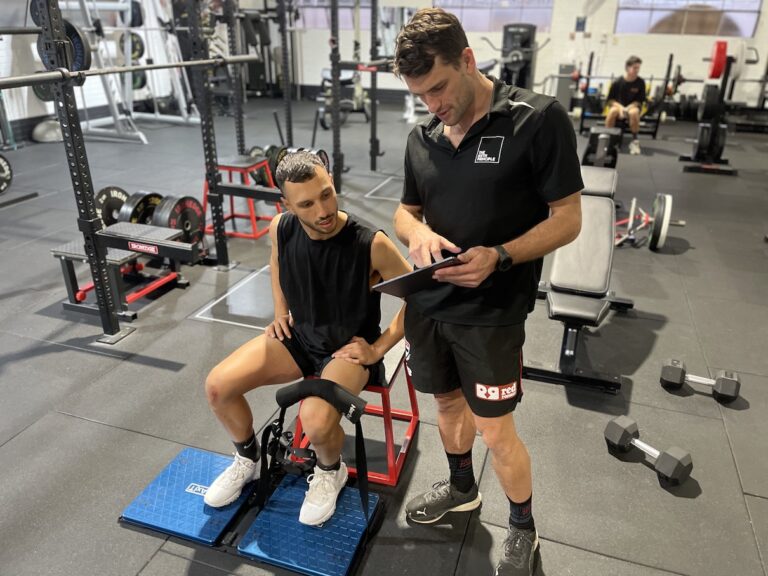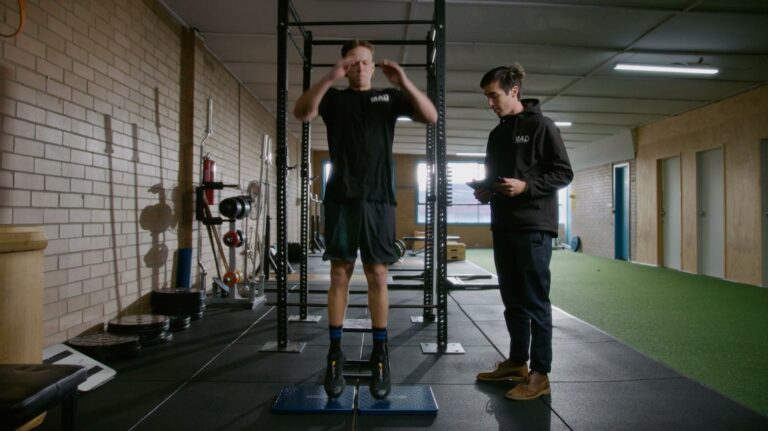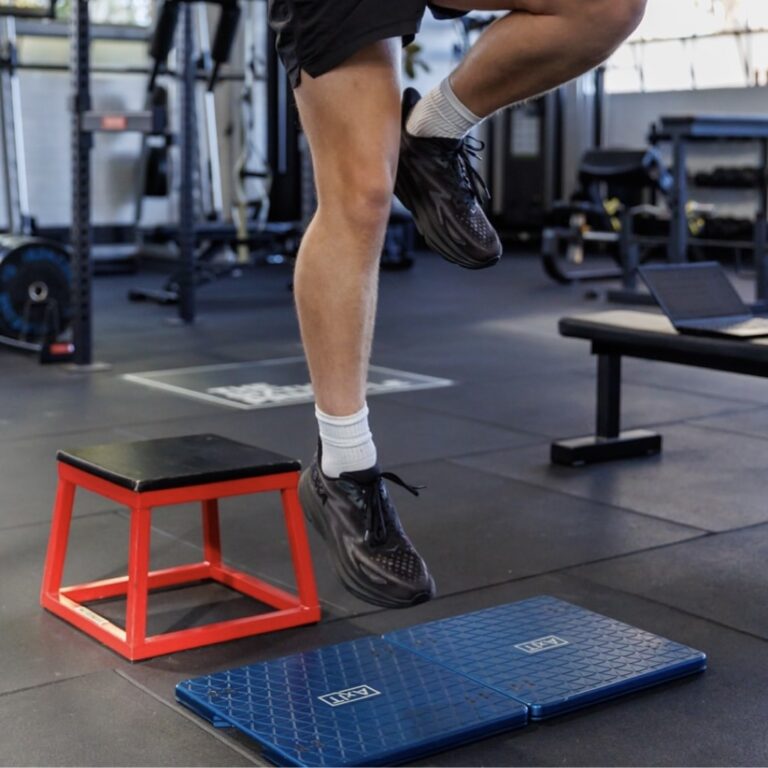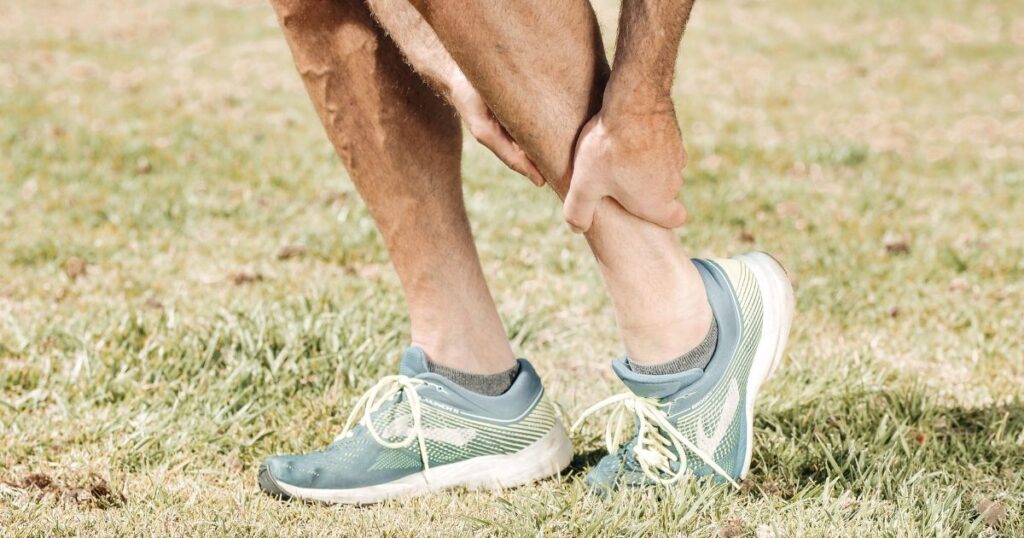When a high-performing athlete returns from injury, they often bring with them a strong mindset, a solid rehab history, and the drive to come back better than before. But for clinicians and coaches, subjective feedback like “I’m feeling good” isn’t always enough to gauge true readiness. What matters most is whether the body is physically prepared to meet the demands of high-speed, high-load movement. That requires objective data.
That’s where the AxIT system comes in. By capturing force, balance, and reactivity metrics in real time, AxIT highlights performance deficits that traditional assessments often miss. This is particularly important in regions that frequently underperform or break down under load: the calf complex, lateral ankle stabilisers, and the tendon structures that govern force transfer and rebound.
Here’s how AxIT can help you assess and improve these critical areas of lower-limb performance.

Calf Output: Peak Force and Fatigue Tolerance
Calf strength and endurance are often underestimated. Yet they play a crucial role in sprint acceleration, cutting mechanics, and sustained late-game explosiveness. When calf output or fatigue tolerance falls short, athletes may lose force in key moments: whether it’s a missed jump, a sluggish change of direction, or a drop in performance under pressure.
With AxIT, you can measure calf-specific force production and endurance capacity using several protocols. Seated and standing isometric plantarflexion tests via the Stomp-IT Force Plates or Pull-IT Dynamometer module reveal peak strength across both the soleus and gastrocnemius. Repeated single-leg hops or a 10-rep pogo test offer insight into reactivity and energy return, while heel raise fatigue assessments track force across reps to expose endurance deficits.
Watch for signs like side-to-side strength imbalances, a steep force drop-off across repeated reps, or consistently low RSI scores. These indicators may signal a need for focused conditioning in both the concentric and reactive phases of calf performance. Programming should aim to build not only maximal output, but also resilience across multiple high-speed, high-load efforts.
Lateral Ankle Control: Stability in Motion
Even minor lateral instability at the ankle can cause significant disruptions to balance, confidence, and overall performance. In sports that require frequent cutting, sudden changes in direction, or reactive jumping, hesitation at the ankle (even subconsciously) can reduce movement efficiency and increase injury risk.
To objectively assess lateral control, AxIT’s force plates provide precise measurements during both static and dynamic tasks. Single-leg balance holds, lateral hops, or lunges can expose side-to-side discrepancies in stability. Drop jumps and directional change tasks reveal asymmetries in ground contact time or force distribution.
Look for increased sway, hesitation, or disproportionate loading on one limb. Longer ground contact times, particularly when observed consistently on a single side, may suggest poor proprioception or incomplete neuromuscular recovery. Addressing these deficits requires targeted frontal plane training, rapid footwork drills, and reactive plyometrics, ideally paired with ongoing testing to confirm gains in control and efficiency.

Tendon Resilience: Load Readiness and Elastic Return
Tendons are the unsung heroes of explosive movement. Whether it’s the Achilles in sprinting, the patellar tendon during jumping, or the gluteal tendons stabilising hip control, these structures absorb and release enormous forces. When tendons are underloaded or functionally compromised, athletes may lose the elastic recoil that powers high-performance movement.
AxIT enables clinicians to assess tendon capacity through both isolated strength tests and integrated movement tasks. Isometric testing of hip abductors, knee extensors, or ankle plantarflexors can highlight asymmetries in force output. Functional assessments, such as controlled step-downs or high-velocity drop landings, reveal how well the body manages deceleration and stores elastic energy.
Key red flags include inconsistent force production, delayed or dampened rebound, and difficulties sustaining output under repeated load. By tracking RSI over time and correlating it with movement control, clinicians can make informed decisions about when to progress loading, how to individualise plyometric training, and how to build tendon resilience with objective confidence.

Why It Matters
In rehabilitation and performance alike, athletes thrive when their output matches their intent. They might feel ready, but objective testing determines whether their body is actually performing at the required level. AxIT bridges this gap by revealing hidden performance limitations, enabling precision in both diagnosis and programming.
Whether it’s spotting early fatigue in the calf, identifying lateral ankle asymmetries, or tracking tendon response to load, AxIT provides the data clinicians need to tailor training, monitor progress, and reduce the risk of re-injury.
Ready to shift from symptom-based rehab to performance-driven return-to-play?
Book a free AxIT demo and discover how easy it is to measure what matters.

